In this article, we will see what you should do if you find your Bluetooth headset is not working with Microsoft Teams. Some users are getting sound disturbances while using a headset during a Teams call, whereas, some cannot hear the members in a Teams meeting. Some users have also reported that their headset microphone is not working with Microsoft Teams during a call. If you are experiencing such an issue, the solutions provided in this post can help you fix the problem.
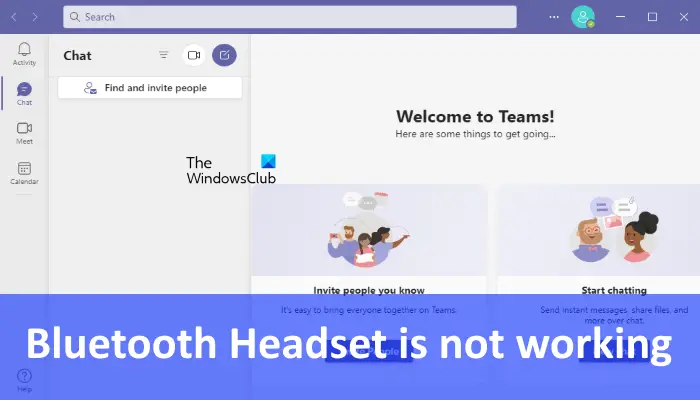
Why won’t my headphones work with Teams?
There are several reasons why your headphones are not working with Microsoft Teams, like the incorrect selection of an audio device in Microsoft Teams, incorrect privacy settings in your Windows 11/10 Settings, corrupted or outdated Bluetooth driver of your system, Wi-Fi and Bluetooth interference, etc.
Bluetooth Headset is not working with Microsoft teams
Follow the suggestions provided below to get this problem fixed.
- Check if you have selected the right audio device in Microsoft Teams
- Check and configure your privacy settings in Windows
- Disable Bluetooth LE Enumerator in the Device Manager
- Select your laptop’s internal microphone in Teams settings
- Change your Wi-Fi frequency
- Disable Handsfree Telephony
- Update your laptop’s Bluetooth driver
- Use the Web version of Microsoft Teams
- Check the list of approved devices for Microsoft Teams
Let’s see all these solutions in detail.
1] Check if you have selected the right audio device in Microsoft Teams
If you have not selected the right audio device in Microsoft Teams, you will not be able to use it during a call. You can check this in Teams settings. The steps to do this are listed below:
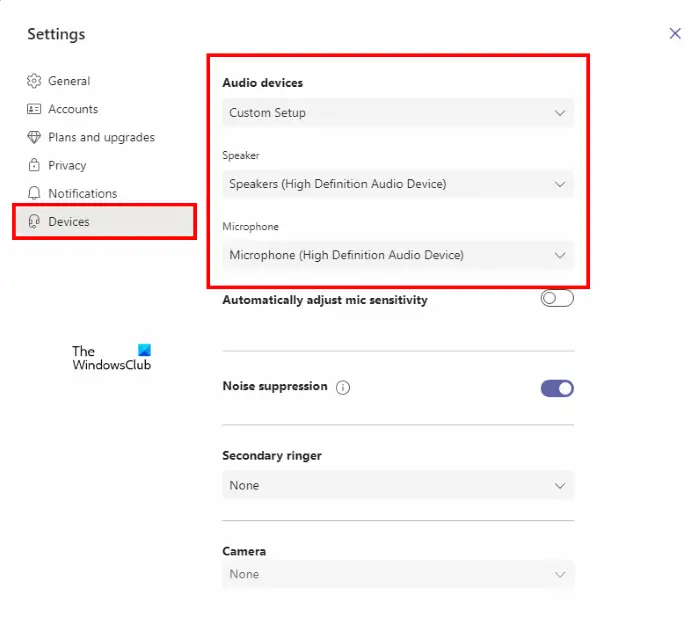
- Open Microsoft Teams.
- Click on the three horizontal dots near your profile icon and select Settings.
- Select the Devices category from the left side.
- Select the right audio device.
2] Check and configure your privacy settings in Windows
If your headset microphone is not working with Microsoft Teams, check if you have granted Teams permission to access your headset microphone or not. The following instructions will guide both Windows 11 and Windows 10 users:
Windows 11
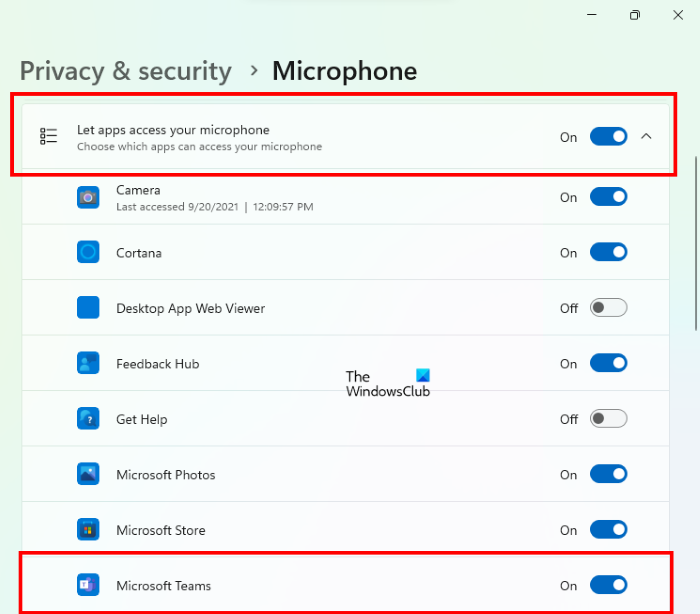
- Press the Win + I keys to launch the Settings app.
- Select the Privacy & Security category from the left side.
- Scroll down and click on the Microphone tab.
- Turn on the button next to Let apps access your microphone.
- Now, scroll down and turn on the button next to Microsoft Teams.
Windows 10
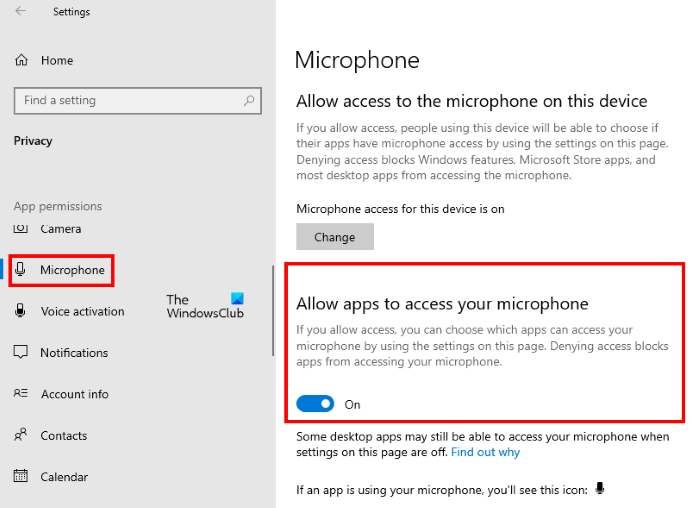
- Open Windows 10 Settings app.
- Go to “Privacy > Microphone.”
- Turn on the button under the Allow apps to access your microphone section.
- Scroll down and check if Microsoft Teams is listed under the allowed apps or not. If yes, turn on the switch next to it.
3] Disable Bluetooth LE Enumerator in the Device Manager
This method worked for a lot of users, Maybe it will work for you too. A Bluetooth Enumerator is responsible for establishing the connection between your system and your Bluetooth devices. Without the Bluetooth Enumerator, your Bluetooth devices won’t connect to your PC. If you open the Bluetooth node in the Device Manager, you will see two Bluetooth Enumerators, namely, a Bluetooth Enumerator and a Bluetooth LE Enumerator. The Bluetooth LE Enumerator is required by the devices that use Bluetooth Low Energy. If you disable it, you will not be able to use the devices that require Bluetooth Low Energy.
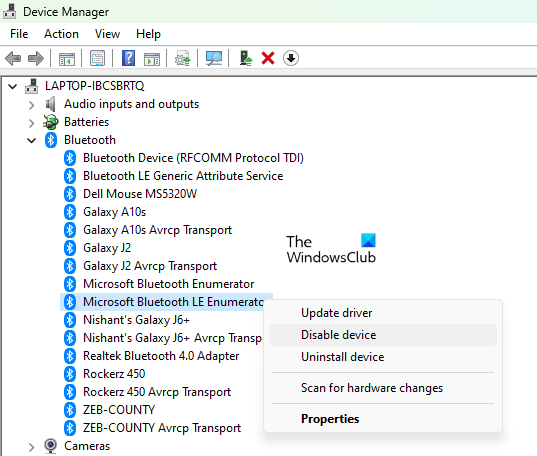
The steps to disable Bluetooth LE Enumerator are as follows:
- Press the Win + X keys and select Device Manager.
- Expand the Bluetooth node.
- Right-click on the Microsoft Bluetooth LE Enumerator and select Disable device.
If it does not fix your problem, you can enable it again and try the next solution.
4] Select your laptop’s internal microphone in Teams settings
For some users, the problem got fixed when they selected their system’s internal microphone in Teams instead of their headset microphone. You can also try this method and see if it solves your problem. The steps to do this are as follows:
- Open Microsoft Teams.
- Open its Settings.
- Select Devices from the left side.
- Now, select your system’s internal microphone instead of your headset microphone.
5] Change your Wi-Fi frequency
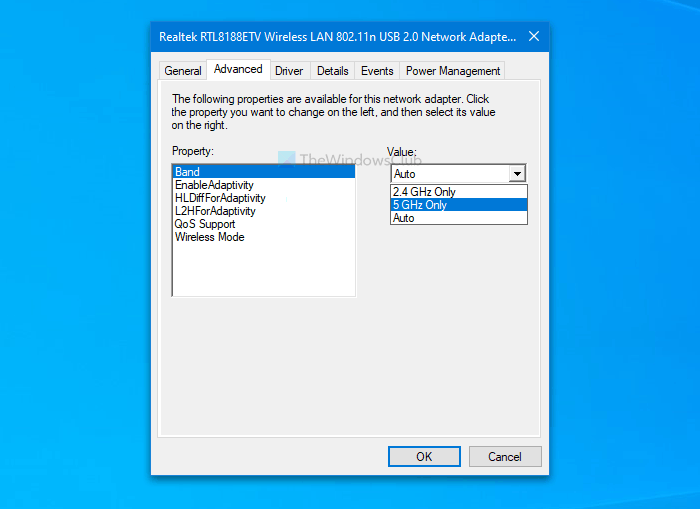
Bluetooth works on 2.4 GHz frequency and Wi-Fi signals can work on different frequencies. It might be possible that your Wi-Fi signal frequency is interfering with the Bluetooth frequency. In such a case, changing the Wi-Fi frequency from 2.4 GHz to 5 GHz can fix the problem. However, some users have also reported that the 5 GHz frequency was interfering with the Bluetooth and they were able to fix the problem by switching their Wi-Fi frequency from 5 GHz to 2.4 GHz. You can try toggling between these two frequencies and see which one fixes your problem.
6] Disable Handsfree Telephony
Another effective solution to get rid of this problem is to disable the Handsfree Telephony for your Bluetooth headset. The steps for this are listed below:
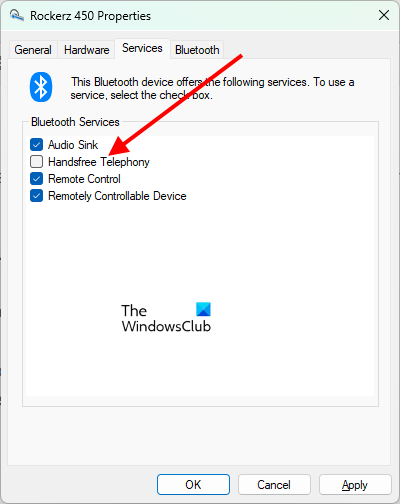
- Press the Win + R keys. This will launch the Run command box.
- Type Control Panel.
- When the Control Panel opens up, select Large icons in the View by mode.
- Now, select Devices and Printers.
- Right-click on your Bluetooth headset and select Properties.
- Select the Services tab and uncheck the Handsfree Telephony checkbox.
- Click Apply and then OK.
7] Update your laptop’s Bluetooth driver
If the problem still exists, there might be a problem with your system’s Bluetooth driver. There is a simple fix for such types of problems. Update your system’s Bluetooth driver.
You can use any of the following methods to update the Bluetooth driver of your system:
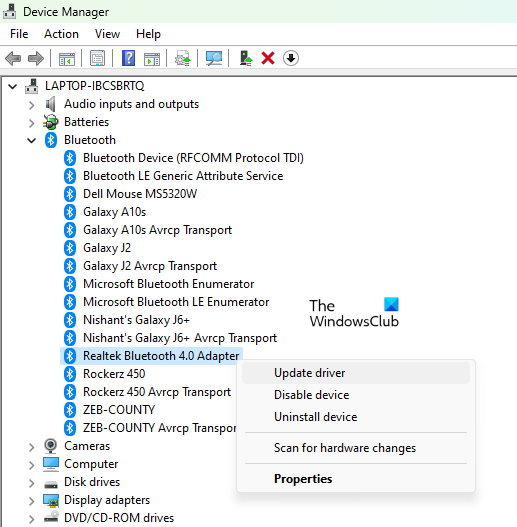
- You can download the Bluetooth driver from your laptop’s vendor website.
- You can use the Windows Optional Updates feature to install the latest version of available drivers.
- You can update the Bluetooth driver from the Device Manager. The steps for the same are as follows:
- Open the Device Manager.
- Expand the Bluetooth node.
- Right-click on your system’s Bluetooth driver and select Update driver.
- Now, select the Search automatically for drivers option.
8] Use the Web version of Teams
If you are continuously experiencing the same issue with the Microsoft Teams desktop app, you can use its web version.
Read: Video sharing is disabled by the administrator in Microsoft Teams.
9] Check the list of approved devices for Microsoft Teams
There is a list of approved Bluetooth headsets on the Microsoft website. These devices are certified by Microsoft and are suitable for every user. If despite trying the above-listed solutions, you still cannot use your Bluetooth headset with Microsoft Teams during a call, you can use any of these devices.
The list is available on microsoft.com.
How do I get my Bluetooth headphones to work with Teams?
If your Bluetooth headphones are not working with Microsoft Teams, check if you have granted Teams to access your headphones or not. You can check this in the privacy settings of your Windows 11/10 device. In addition to this, there are several reasons why your Bluetooth headphones are not working with Teams. You can also try some more fixes, like disabling the Handsfree Telephony for your Bluetooth headphone, changing your Wi-Fi frequency, etc.
Which Bluetooth headphones work with Microsoft Teams?
If you are searching for which Bluetooth headphones work with Microsoft Teams, you can check the list of approved Bluetooth headsets. These headsets are certified by Microsoft. Hence, they are the most suitable devices to use with Microsoft Teams.
Hope this helps.
Read next: Microsoft Teams Join button is missing or not working.
Leave a Reply